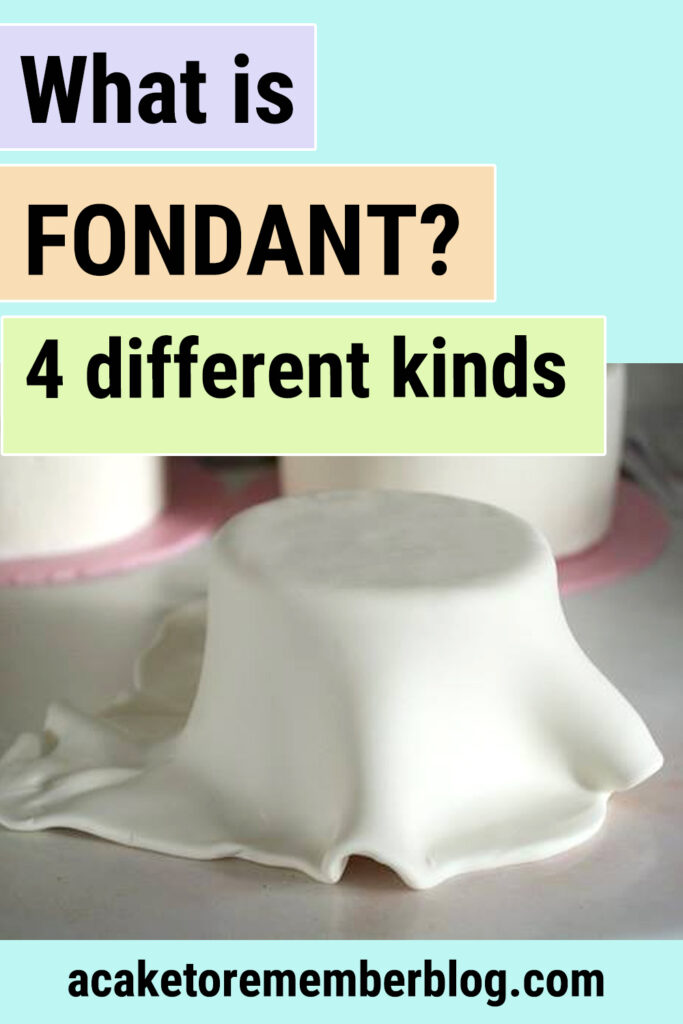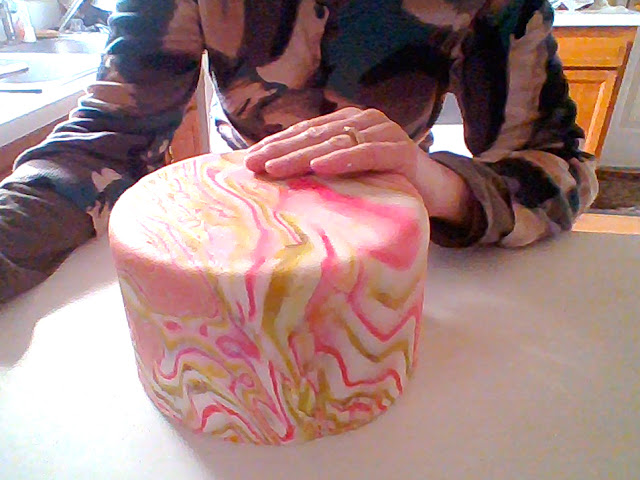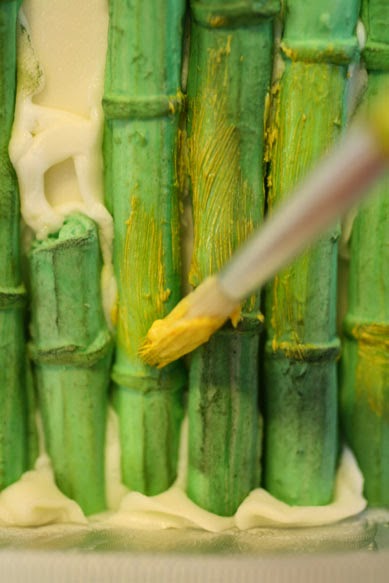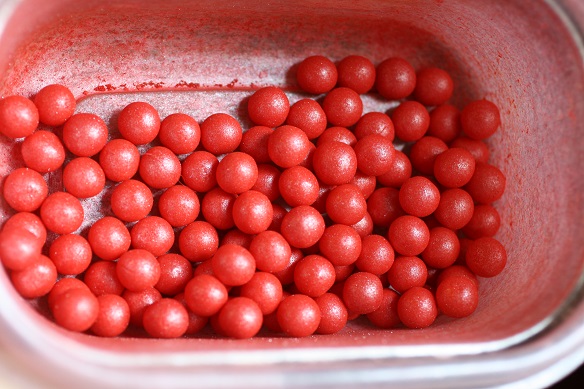
When you hear people talk about “fondant” in cake decorating, you might not realize that there are multiple types of fondant.
Some are for covering cakes, and some are for pouring over desserts like petit fours.
What are the two basic types of fondant, and what makes them different?
This article includes affiliate links that will pay a commission if they’re used to purchase something. As an Amazon associate, I earn from qualifying purchases.

What is rolled fondant?
Rolled fondant is the traditional type of rolled icing that’s used to cover a cake tier.
You make fondant from confectioner’s powdered sugar, water, gelatin, glycerine and glucose, and it has a smooth, pliable, clay-like texture that can be rolled out to cover cakes with a smooth sheet.
Rolled fondant is usually flavored with vanilla or other mild flavorings, but since it’s applied over the cake icing, it doesn’t need to be flavored separately.
A lot of people in the US think that fondant doesn’t taste good, and since it’s really sweet it’s often something that people use for looks on a cake instead of the taste of it.
In countries other than the US, rolled fondant is a traditional cake icing, so it’s more common on cakes than buttercream. In the past 10-15 years a lot of people have started using both fondant and buttercream so the different kinds of icings are becoming more common worldwide.
Marshmallow fondant.
Marshmallow fondant is basically the same thing as regular rolled fondant, but it’s made with commercially-sold marshmallows, corn syrup, and more confectioner’s sugar.
Since marshmallows have flavorings in them, and they’re made from sugar, gelatin, and corn syrup, their basic ingredients are pretty much what rolled fondant is already made from.
To make homemade marshmallow fondant, you melt the marshmallows, then add the other ingredients to make a smooth, rollable sugar clay.
This is a pretty common recipe that people use because you can avoid messing around with the gelatin. It’s an easy fondant icing recipe for beginners because of that.

Vegan fondant
Vegan fondant is basically the same as regular fondant but the recipe has no gelatin in it.
Since gelatin is an animal product, you have to pull that out of anything that’s vegan, so gums are usually used in gelatin’s place.
You can buy some brands of fondant that are vegan, like Satin Ice, but you can also make it by using gumtex or tylose instead of the gelatin.
This can take some trial and error, because adding a gum to fondant usually makes it stiffer, and it will harden up if you add too much.
If you don’t add enough, though, it won’t be pliable enough to roll out.
I would suggest that if you need a vegan fondant you buy it, because trying to make it yourself can be tricky!
Fondant for modeling
Fondant that’s used for modeling is usually just regular fondant that has some tylose or another gum added to it to make a quick gumpaste.
The difference between gumpaste and fondant is that fondant has softeners like gelatin in it, and gumpaste doesn’t.
Gumpaste dries faster and harder, so it’s used to make sugar flowers that have to keep their shape.
If you add tylose or gum tragacanth to fondant it will dry hard, but it won’t dry as hard as a real gumpaste.
What is poured fondant?
Poured fondant is a liquid sugar that’s made from sugar, water, and glucose, and as the mixture is cooked the sugar inverts and gives you a cloudy consistency that looks like opaque icing when it’s poured over cakes.
It’s like a glaze, but it’s not as thin, so it sets up like a hard icing.

It’s usually used on petit fours and other small cakes to cover them, since icing tiny cakes with regular icing isn’t practical.
A lot of people alter the recipe to include white chocolate or confectioner’s sugar to make the icing more opaque, but the traditional recipe doesn’t include those.
The hardest part of using poured fondant is pouring it over the cake or cookie evenly, because it’s really messy and it can look thin on the petit fours.
If you make it and it’s not thick enough, it will also look bumpy and transparent on the cakes.
But if it’s too thick it won’t pour evenly, so it’s a difficult type of icing to use if you don’t have experience with it.
Dipping the cakes into the icing is an option, but you have to be careful not to get crumbs into the icing or they can transfer to the next petit four and make it look bumpy.
Poured fondant isn’t easy to use, so if you’re going to be working with it, give yourself a trial run first to work out what the best method for you is!


